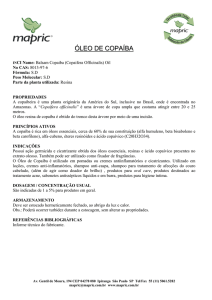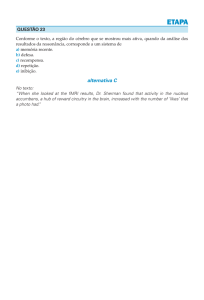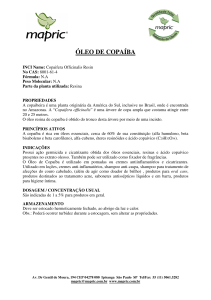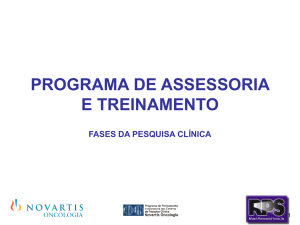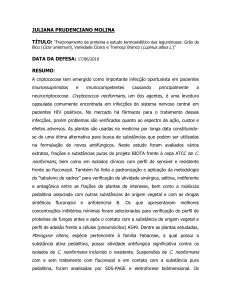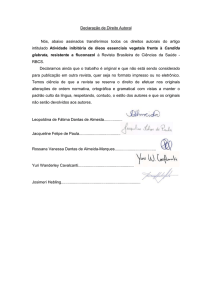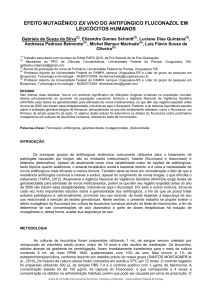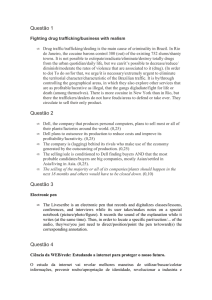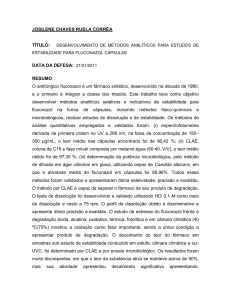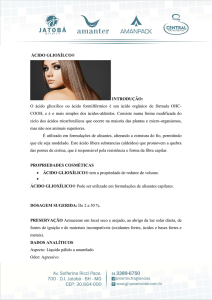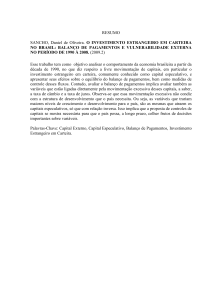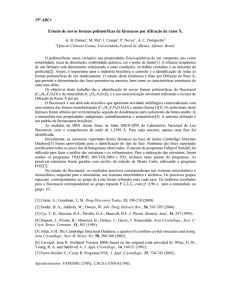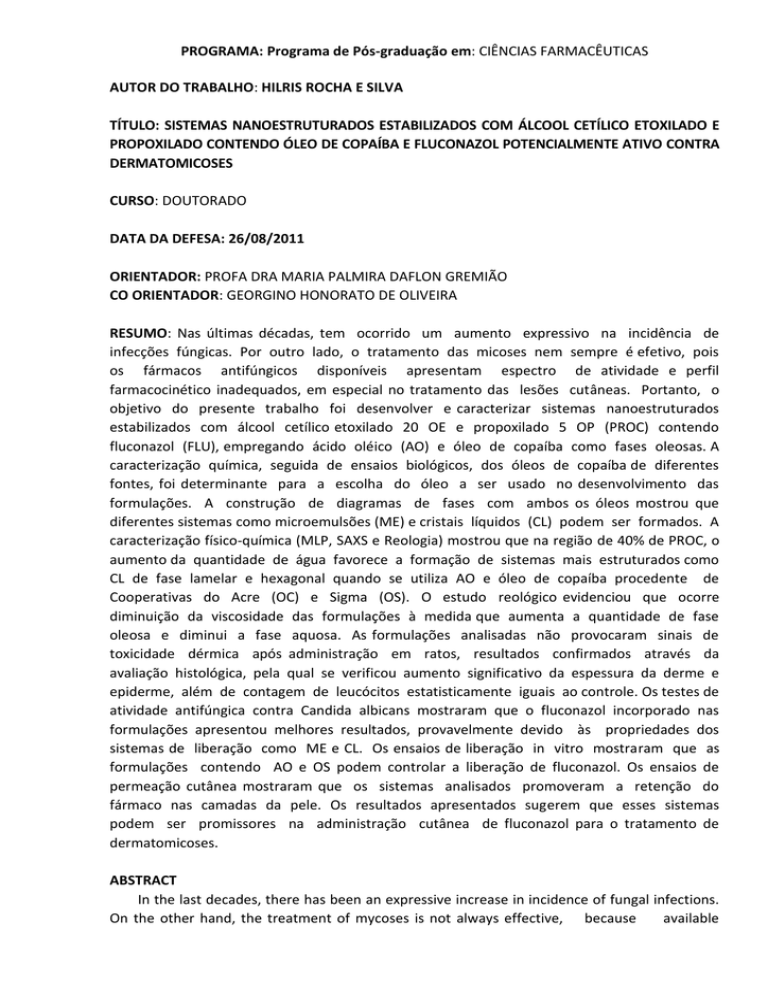
PROGRAMA: Programa de Pós-graduação em: CIÊNCIAS FARMACÊUTICAS
AUTOR DO TRABALHO: HILRIS ROCHA E SILVA
TÍTULO: SISTEMAS NANOESTRUTURADOS ESTABILIZADOS COM ÁLCOOL CETÍLICO ETOXILADO E
PROPOXILADO CONTENDO ÓLEO DE COPAÍBA E FLUCONAZOL POTENCIALMENTE ATIVO CONTRA
DERMATOMICOSES
CURSO: DOUTORADO
DATA DA DEFESA: 26/08/2011
ORIENTADOR: PROFA DRA MARIA PALMIRA DAFLON GREMIÃO
CO ORIENTADOR: GEORGINO HONORATO DE OLIVEIRA
RESUMO: Nas últimas décadas, tem ocorrido um aumento expressivo na incidência de
infecções fúngicas. Por outro lado, o tratamento das micoses nem sempre é efetivo, pois
os fármacos antifúngicos disponíveis apresentam espectro de atividade e perfil
farmacocinético inadequados, em especial no tratamento das lesões cutâneas. Portanto, o
objetivo do presente trabalho foi desenvolver e caracterizar sistemas nanoestruturados
estabilizados com álcool cetílico etoxilado 20 OE e propoxilado 5 OP (PROC) contendo
fluconazol (FLU), empregando ácido oléico (AO) e óleo de copaíba como fases oleosas. A
caracterização química, seguida de ensaios biológicos, dos óleos de copaíba de diferentes
fontes, foi determinante para a escolha do óleo a ser usado no desenvolvimento das
formulações. A construção de diagramas de fases com ambos os óleos mostrou que
diferentes sistemas como microemulsões (ME) e cristais líquidos (CL) podem ser formados. A
caracterização físico-química (MLP, SAXS e Reologia) mostrou que na região de 40% de PROC, o
aumento da quantidade de água favorece a formação de sistemas mais estruturados como
CL de fase lamelar e hexagonal quando se utiliza AO e óleo de copaíba procedente de
Cooperativas do Acre (OC) e Sigma (OS). O estudo reológico evidenciou que ocorre
diminuição da viscosidade das formulações à medida que aumenta a quantidade de fase
oleosa e diminui a fase aquosa. As formulações analisadas não provocaram sinais de
toxicidade dérmica após administração em ratos, resultados confirmados através da
avaliação histológica, pela qual se verificou aumento significativo da espessura da derme e
epiderme, além de contagem de leucócitos estatisticamente iguais ao controle. Os testes de
atividade antifúngica contra Candida albicans mostraram que o fluconazol incorporado nas
formulações apresentou melhores resultados, provavelmente devido às propriedades dos
sistemas de liberação como ME e CL. Os ensaios de liberação in vitro mostraram que as
formulações contendo AO e OS podem controlar a liberação de fluconazol. Os ensaios de
permeação cutânea mostraram que os sistemas analisados promoveram a retenção do
fármaco nas camadas da pele. Os resultados apresentados sugerem que esses sistemas
podem ser promissores na administração cutânea de fluconazol para o tratamento de
dermatomicoses.
ABSTRACT
In the last decades, there has been an expressive increase in incidence of fungal infections.
On the other hand, the treatment of mycoses is not always effective, because
available
antifungal drugs show inappropriate activity spectrum and pharmacokinetic profile. The
aim of this work was to develop and characterize nanostructured systems stabilized by
propoxyl (5OP) ethoxyl (20 OE) cethyl alcohol (PROC) containing fluconazole, using oleic acid
and copaiba oil from different origins
as oily phases.
Chemical and biological
characterization of copaiba oils from different origins was decisive for the choice of oil to be
used in the development of the formulations. The construction of phase diagrams with
studied copaiba oils showed that different systems such as microemulsions (ME) and liquid
crystals (CL) can be formed. The characterization by polarized light microscopy, rheological
behavior and SAXS confirmed the results obtained in phase diagrams, showing that in the region
of 40% of PROC, the increase in the quantity of water favors the formation of more structured
systems as CL of lamellar and hexagonal phase when using AO and copaiba
oil
Cooperatives founded in
Acre (OC) and Sigma
(OS). The formulations
did not
show signs of Acute Dermal Toxicity after dermal administration in rats. This result
was confirmed by histological evaluation, for which there was significant increase in
dermis and epidermis thickness, and present leukocytes count lesser than the control. The
antifungal activity essay against C. albicans showed that the formulations presented significantly
higher inhibition halo, suggesting that the components of the systems can improve the drug
diffusion, providing better use of their properties and increasing antifungal activity. The in vitro
release tests showed that the formulations containing OS and AO can control the drug release.
Cutaneous permeation tests showed that the analyzed systems promoted the drug retention in
the skin layers. The presented results suggest that these systems may be promising in
cutaneous administration of fluconazole in the treatment of dermatomicoses.
BANCA EXAMINADORA:
Titular:
MARIA PALMIRA DAFLON GREMIÃO (Orientador)
NEREIDE STELA SANTOS MAGALHÃES
MARLUS CHORILLI
SILVIA STANISÇUASKI GUTERRES
RENATA FONSECA VIANNA LOPEZ
Suplente:
VICTOR HUGO VITORINO SARMENTO

